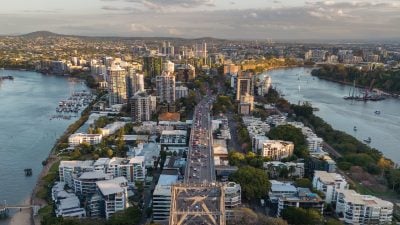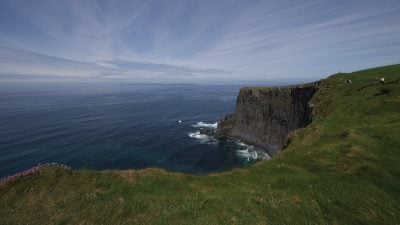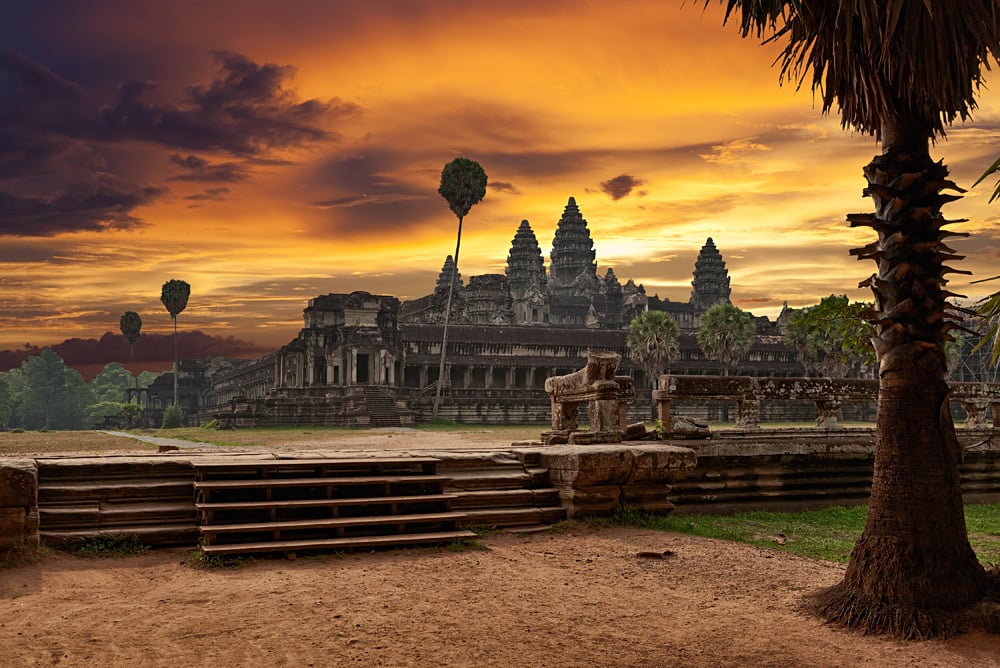
Visit the Angkor Wat Temples – a “Must See” Cambodia Tour Gem
A short insight into Angkor Wat, a “must include” historical site to be explored on your Cambodia tour.
Because of its size and vastness, Angkor Wat, is an archaeological site that needs plenty of time to really explore. However, even if time is limited, you can still enjoy the magnificence of the Angkor Wat Temples complex. You just have to choose which parts of the site you want to visit on one of the many tours of varying lengths available. The experts say you need 2 to 3 days to cover all aspects. That’s how large it is. Angkor Wat literally means, “City of Temples” and is a UNESCO World Heritage Site.
Where are the Angkor Wat Temples?
The Angkor Wat complex is 5.5 kilometres/3.5 miles due north of the town of Siem Reap. This is where you would stay. There are a large number of hotels to suit all budgets and there are plenty of restaurants for dining. Angkor Wat is easily reached via a well-made road.
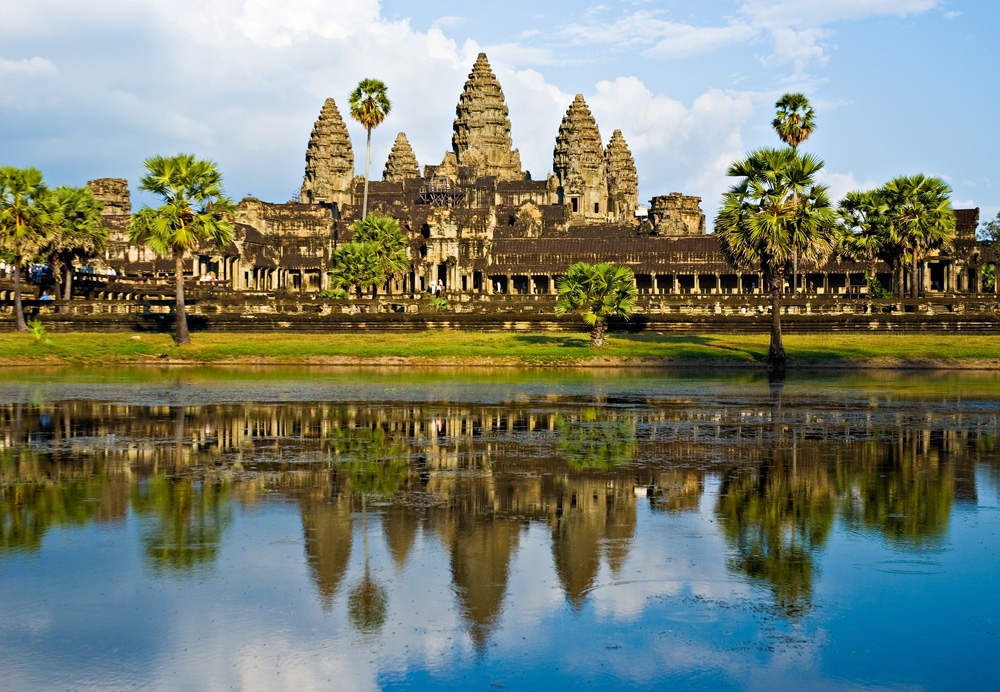
What Exactly is Angkor Wat?
I am always surprised that Angkor Wat is not included in any lists of the Seven Wonders of the World (ancient or modern), for as I see it, it is just as important as Machu Picchu in Peru, Petra in Jordan, and the Great Wall in China. It is actually the largest religious monument in the world. However, Angkor Wat was also an ancient city as well as a temple complex in Cambodia, and the centre of the Khmer civilization which once ruled South East Asia from the 9th to the 13th century. It was originally constructed as a Hindu temple for the god, Vishnu, and was transformed into a Buddhist temple towards the end of the 12th century. The Khmer civilization eventually became extinct and, although the temple complex was known to exist, it wasn’t until 1860 that a French explorer came across it and rediscovered it. The jungle had overgrown most of the complex, but over time, the growth had been cut away, revealing what we now see today. The one thing that could be confusing is that the complex, although called Angkor Wat, has the same name given to the main and outstanding temple which only occupies a small part of the complex. It is approximately 210 hectares/500 acres in area. Incidentally, if visiting Angkor Wat on a Cambodia tour, it should be remembered that this is a sacred religious site to the local people, so dress modestly.
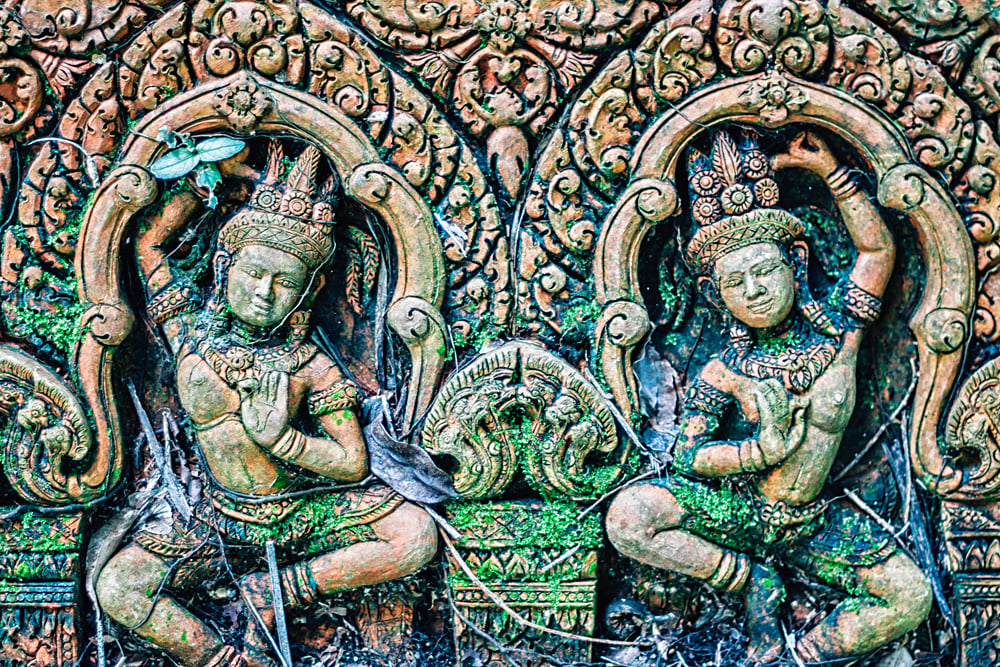
How Was Angkor Wat Built?
It is said that the literally millions of enormous sandstone blocks, weighing up to 1500 kilograms/3300 pounds from which it is made, came from a mountain 50 kilometres away and was brought to the site down the Siem Reap River on rafts. My research tells me this involved 6000 elephants and 300,000 workers. The blocks were bonded together by using a vegetable compound rather than mortar.
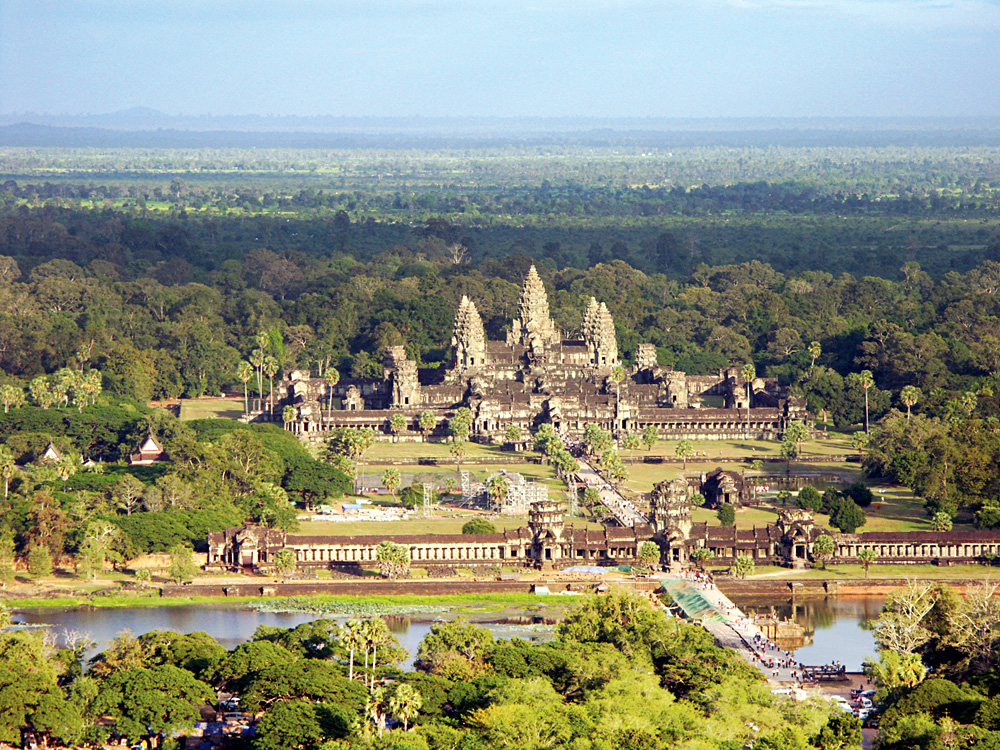
Some of the Most Popular Temples
Angkor Wat
When you arrive at the entrance gates to Angkor Wat, you will immediately be struck by the immense size and grandeur of the main temple (called Angkor Wat!). It is situated at the end of a long walkway, approximately 475 metres/520 yards long, and is surrounded by a moat. I feel a photograph does more justice to it than words, but here is a brief description. This temple was considered to be the largest Asian structure at the time. It is over 62 metres/200 feet high and the central part has four towers in the shape of a lotus flower. Around the outside of the temple is an 800 metre/2600 feet long series of intricate and fascinating bas-reliefs or carvings depicting historical events and stories from mythology. The Gallery of a Thousand Buddhas used to consist of hundreds of Buddha images, but many have been removed or stolen with just a few remaining. There was a recital in 2002 given by the famous tenor, Jose Carreras, who sang at Angkor Wat, backed by the Singapore Symphony Orchestra.
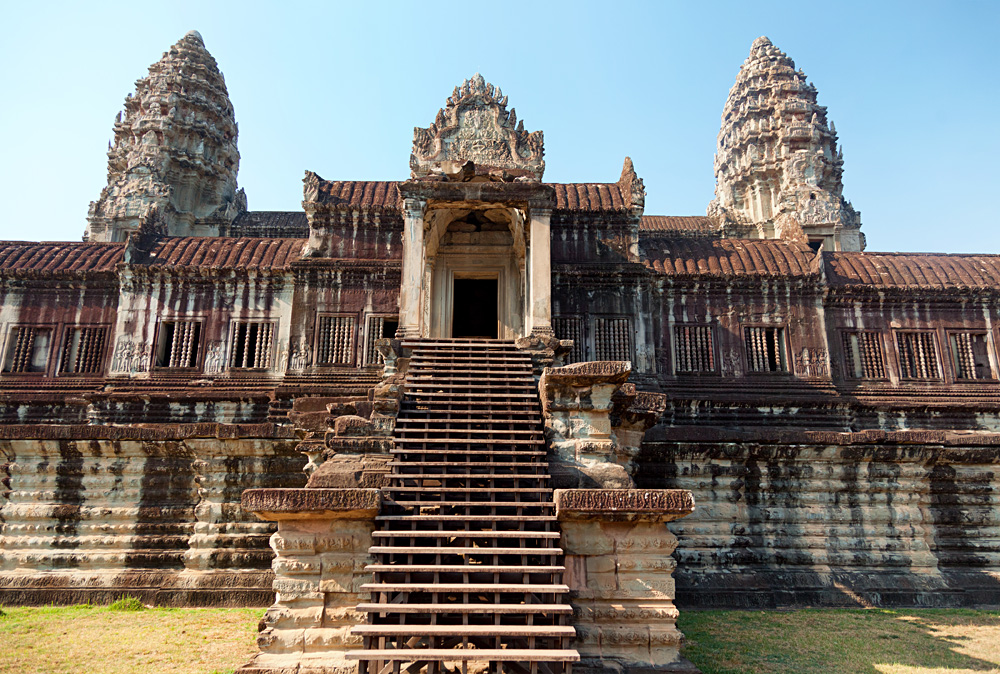
Angkor Thom
Angkor Thom means,”Big Angkor” and was a royal city complete with moat and surrounding walls. It was the last capital of the Khmer Empire. Situated not far from the Angkor Wat Temple, it includes the Bayon Temple and the Terraces of the Elephants and Leper King, among a number of other less popular sites. There are five entrance gates to Angkor Thom, each displaying interesting giant faces.
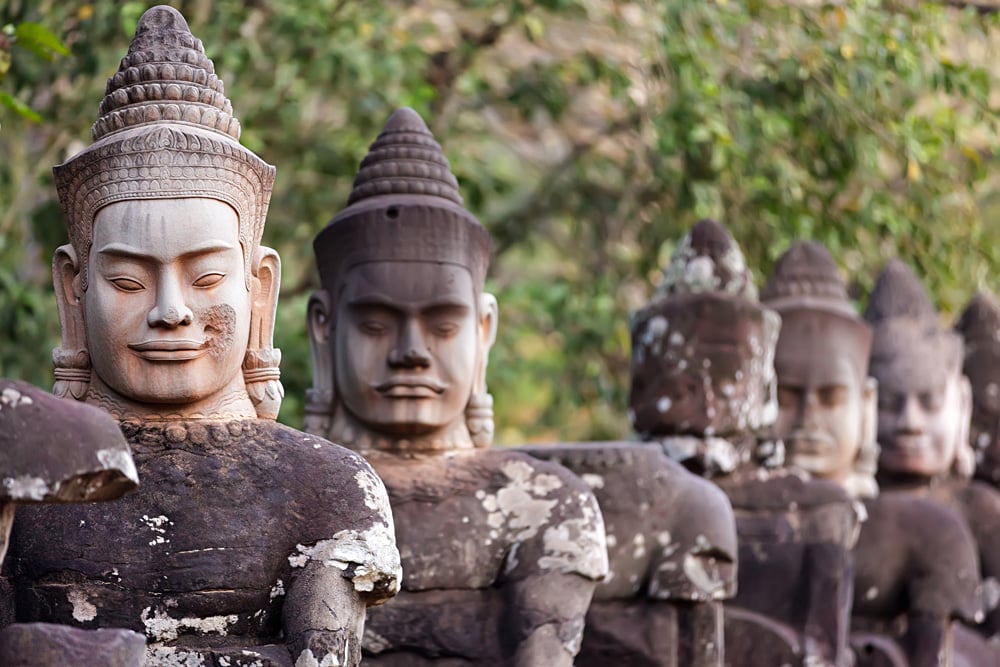
Bayon Temple
The Bayon Temple is a distinctively-carved edifice situated in Angkor Thom. It is known for its many massive stone faces carved on its 54 towers. The outside wall features a series of mind-boggling 11,000 bas-reliefs which depict historical events and scenes from the everyday life of the Khmers. Elsewhere are scenes of battles, armies, hunters, animals, boats, fishermen, athletes, acrobats, jugglers, plus much more.

The Terrace of Elephants and the Terrace of the Leper King
The 350 metre/1000 feet long and 2.5 metre/8 foot high Terrace of the Elephants was used as a viewing stand during public and royal ceremonies. It is decorated with many almost life-size elephants – hence the name – but the middle section is decorated with a number of lions. There are some other extraordinary carvings which include a five-headed horse and Khmer warriors and dancers.
The Terrace of the Leper King, according to legend, was named after a Khmer king who had leprosy. Another legend has it that the naked statue on the terrace is that of the king of the underworld. However, experts also claim the name is derived from the faded colours and moss which grew on the terrace. There is a large amount of bas-reliefs carved into the terrace. However, when compared to the carvings of Banteay Srei (mentioned below), there is no comparison.
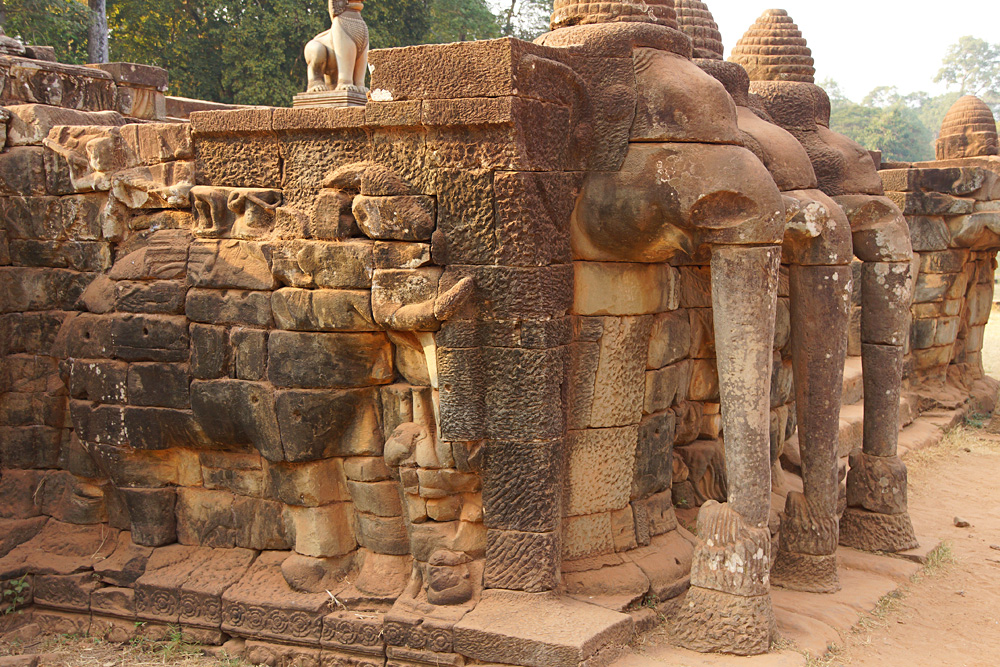
Ta Prohm
This is the temple complex that fascinates many people because it is still, for the most part, covered in jungle vines which envelop the buildings. It is not in the best state of preservation but gives an excellent idea as to how everything must have looked before the jungle vines were cut away elsewhere. Ta Prohm was made famous by the movie, Tomb Raider, starring Angelina Jolie.
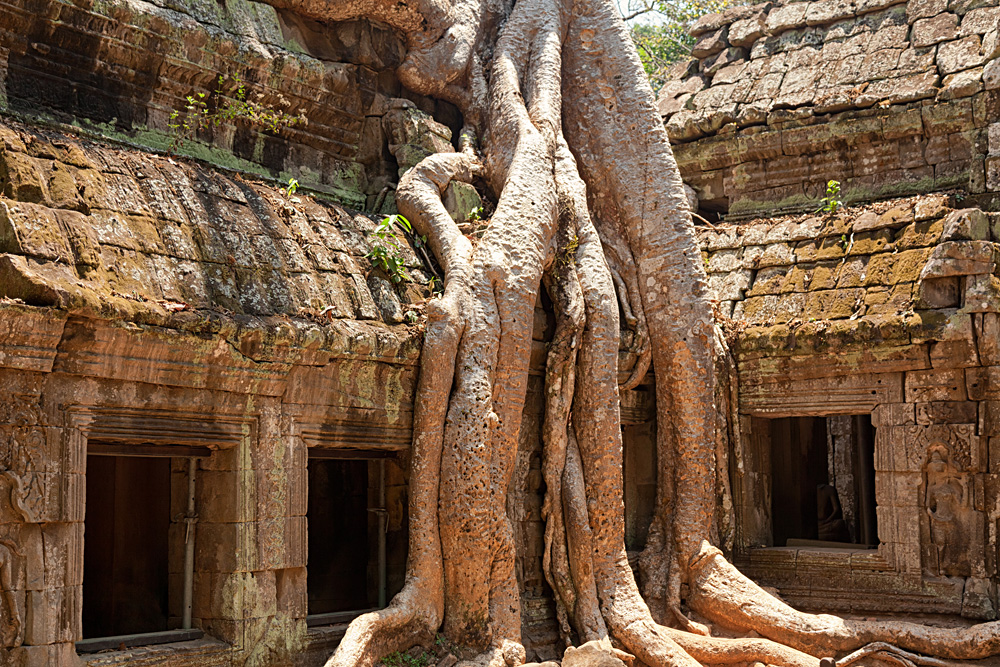
Banteay Srei
This is one of the major temples but happens to be located some distance from the centre of activities. It is approximately 19 kilometres/12 miles north of the Angkor Wat Temple. Dating back to 967 AD, the name means, “Citadel of the Women” because of the delicacy of the pink stone carvings indicating that the work was done by women, but who knows. It consists of a temple, with three towers with carvings of both male and female figures, as well as highly ornamentally decorated libraries. In connection with this temple, I would like to quote from information written elsewhere on Banteay Srei which I found amusing. In 1923, “Frenchman André Malraux was arrested in Phnom Penh for attempting to steal several of Banteay Srei’s major statues and pieces of sculpture. Ironically, Malraux was later appointed Minister of Culture under Charles de Gaulle.”
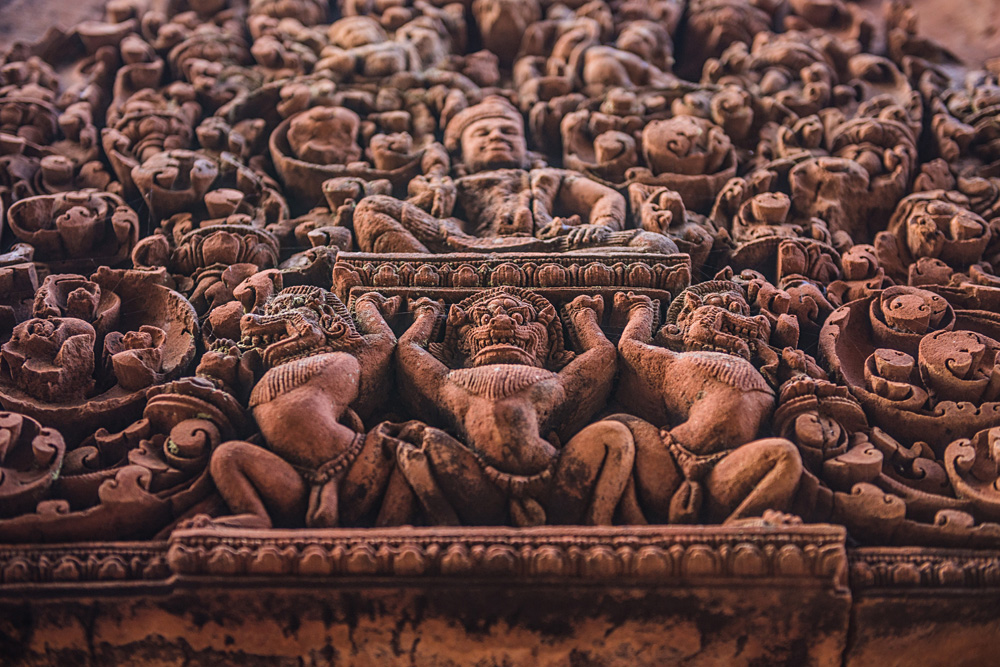
Preah Khan
Preah Khan is one of the largest sites of the Angkor Wat complex and means, “Royal Sword.” It was an important temple but was also used as a Buddhist university. What is interesting is that it has not been totally restored – with many trees and vines growing up around the ruins. The outer wall of the temple has a series of Garudas (mythical birds) at 50 metre/ 160 feet intervals.

I have mentioned the principal sites of Angkor Wat, but there are many others certainly worth visiting. If you at least cover the above-mentioned, you will have experienced the essence of Angkor Wat on your Cambodia tour.
Get more travel inspiration by email.
Subscribe
0 Comments

Get the latest travel trends & hear about the best deals on vacations around the world.
If you’re a Globetrotter, these are the newsletters for you!

